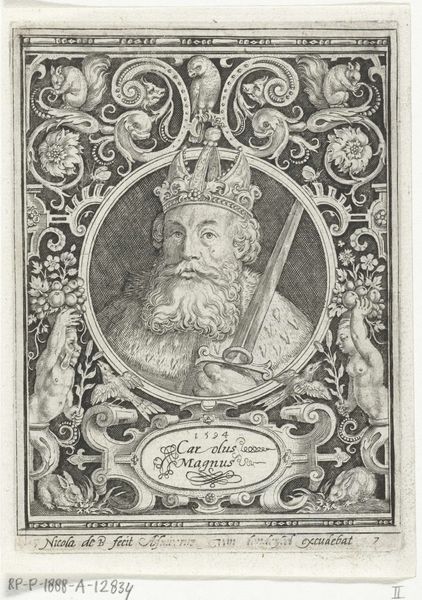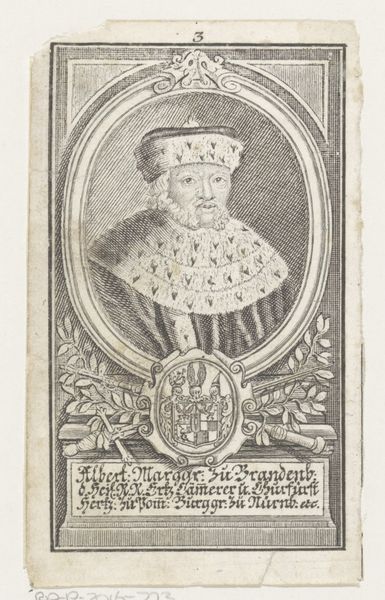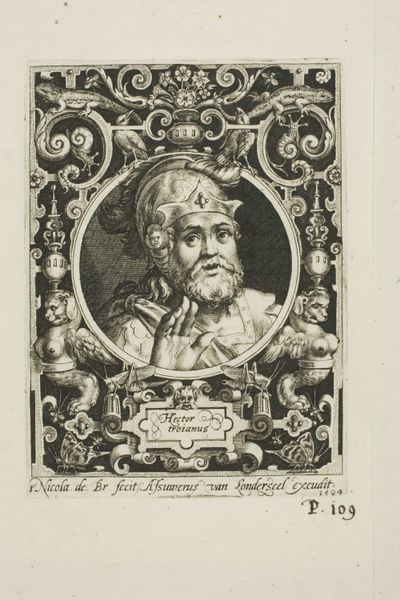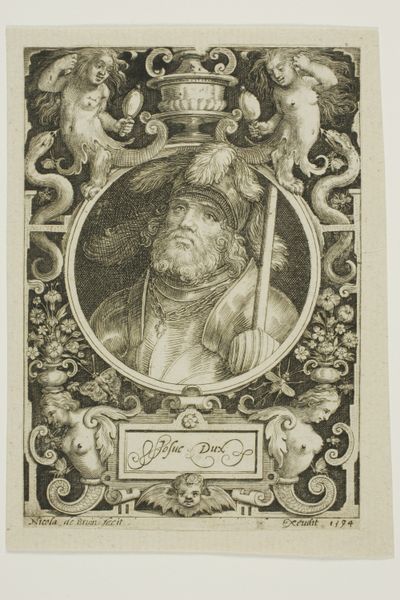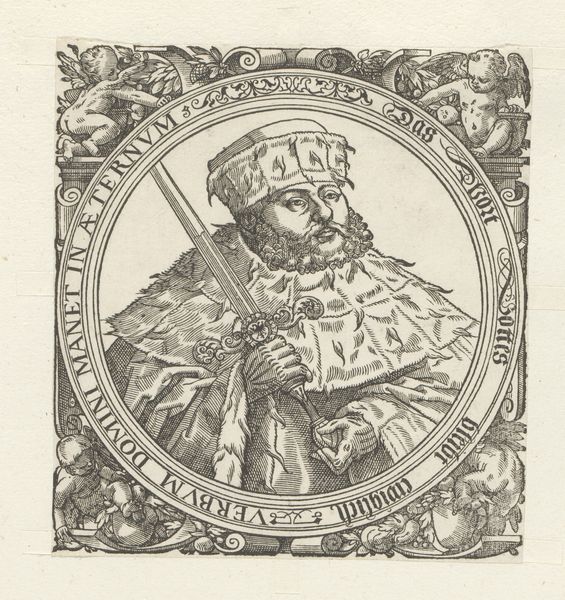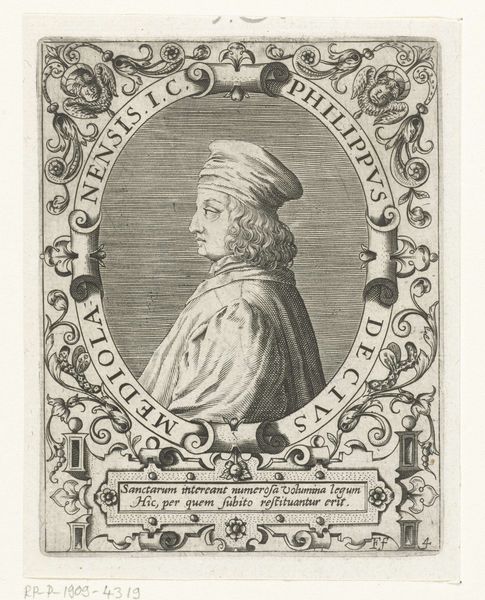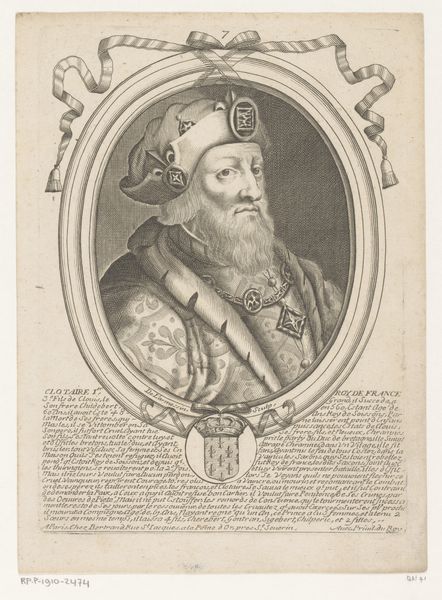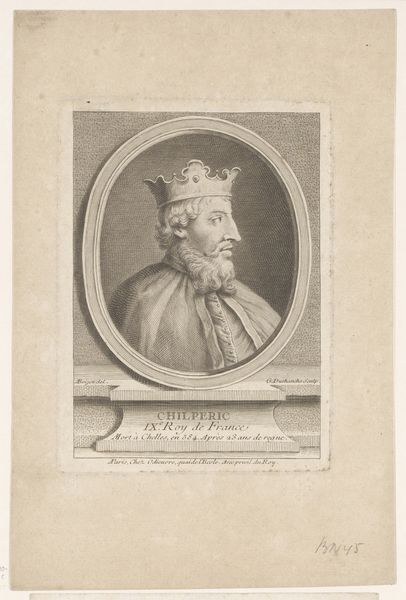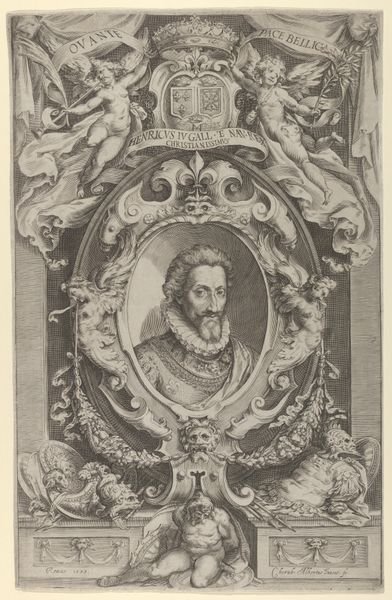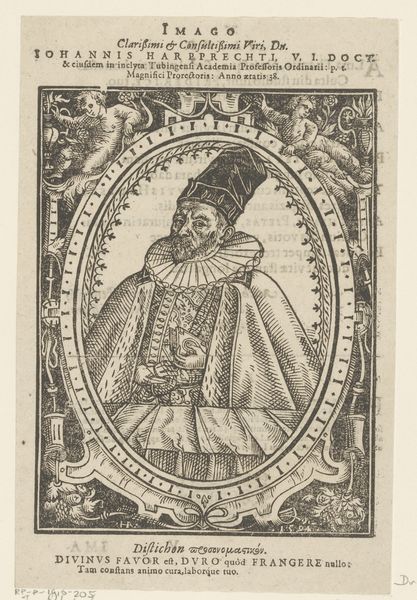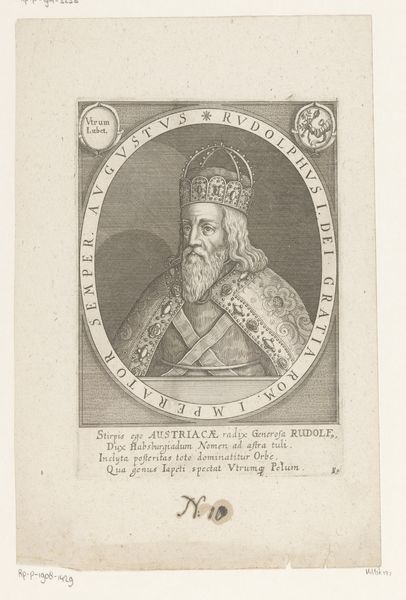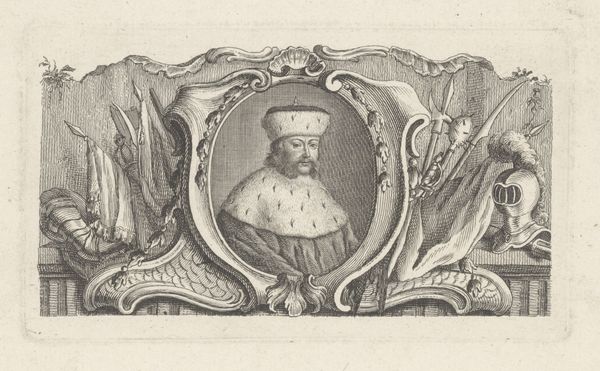
drawing, print, paper, engraving
#
portrait
#
drawing
# print
#
mannerism
#
paper
#
history-painting
#
northern-renaissance
#
engraving
Dimensions: 118.5 × 91 mm (image); 123 × 92 mm (plate); 180 × 149 mm (sheet)
Copyright: Public Domain
Curator: What a strikingly detailed print! This is "Charlemagne, plate seven from The Nine Worthies," an engraving rendered in 1594 by Nicolaes de Bruyn. The artwork resides here at the Art Institute of Chicago. Editor: My first thought is how authoritative the portrait appears, almost confrontational. But it is softened somehow, like royal propaganda filtered through an artist's imagination. The framing feels rather ornate, even whimsical. Curator: It's essential to consider the historical backdrop. Bruyn, working in the late 16th century, was participating in a broader cultural moment of idealizing historical figures like Charlemagne, even imbuing them with near mythical qualities. These representations served to legitimize contemporary power structures. Editor: Yes, I see what you mean. The animals nestled in the ornamental structure surrounding the portrait carry layers of symbolism. We see what appears to be an eagle which denotes the Holy Roman Empire; the squirrels evoke diligence and preparation; and the nymphs with fruit are symbolic of prosperity and perhaps worldly temptation. Charlemagne is thus enshrined within multiple symbolic orders. Curator: Precisely! And that symbol system also engages contemporary theories of power and identity. For instance, we see a powerful, male ruler at the center. But the inclusion of those figures on the periphery acknowledges a complex tension. Does it inadvertently reflect on Charlemagne's own relationship with abundance and temptation? Editor: That reading gives an opening into something of a counter narrative to the dominant, authoritative impression created at first sight. And what of the sword? It feels almost delicately held against the stern features, rather than as an aggressive declaration of force. It is though he carries the burden rather than the power. Curator: That observation helps clarify the purpose and value of studying historical representation! It's by confronting the symbolism—and interrogating those elements that the powers are embedded in the piece. Bruyn may have been aware of tensions surrounding rulership and individual agency, whether he meant to or not. Editor: The portrait resonates beyond historical representation; it speaks to how we still construct and challenge ideals today through iconic imagery. Curator: It pushes us to understand the forces and considerations when we think about gendered power and the role of individuals in leadership positions even now.
Comments
No comments
Be the first to comment and join the conversation on the ultimate creative platform.
